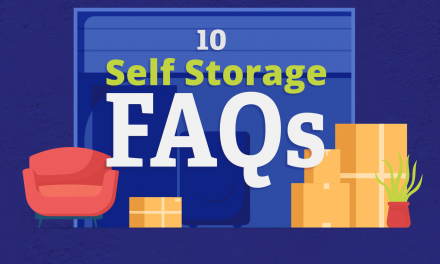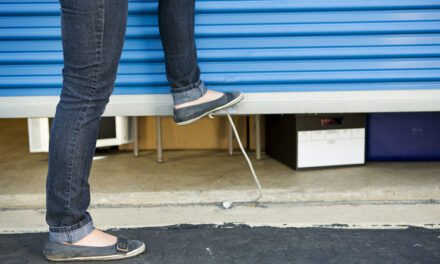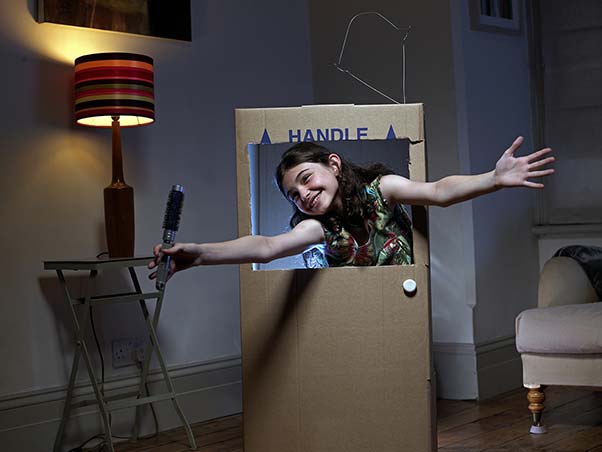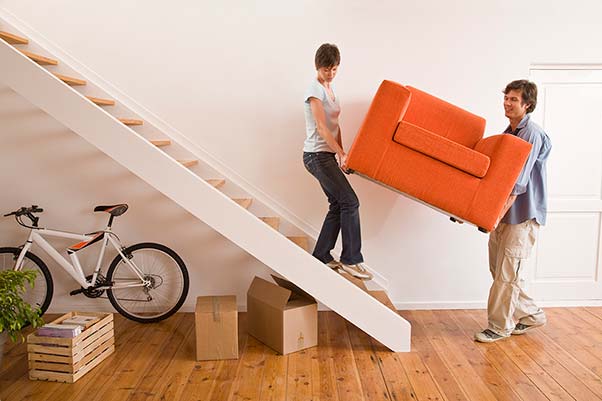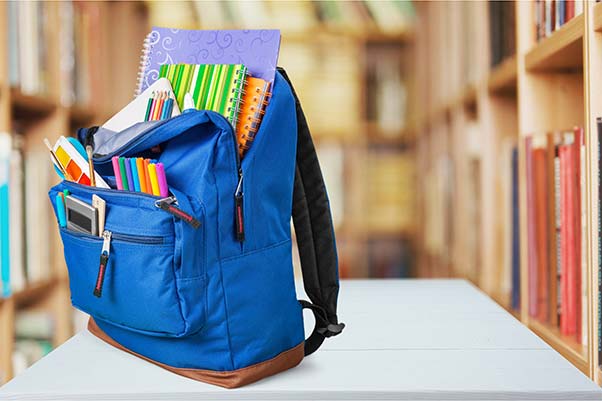Congrats on tying the knot! As you embark on this new journey with your one and only, you’ll face many adventures and challenges together as a couple. Your first challenge? It might just be combining households if you’re moving in together after marriage.
The median age of first marriage in the US is 28.6 for women and 30.5 for men, meaning many newlyweds have already established their own living spaces, complete with furniture, kitchen supplies, decor, and cherished possessions. (And let’s not forget that people can find love at any age and may already have expansive households to combine).
So, what happens when you’re moving in together and discover you have two toasters, two coffee tables, and enough dishes to open a restaurant? It’s time for some planning, communication, and smart solutions.
Before Moving in Together: Important Conversations and Planning
Before you start packing any boxes or hiring a moving company, take a pause. You and your new spouse have a lot of things to discuss before moving in together.
Decide Where to Live
Step one is to figure out where you’ll start your new life together. Does it make sense to move into your abode? Does your new life partner have better digs (or a lower mortgage)? Or, does it make sense for you both to pull up your tent stakes and find a place that fits your vision for the future (which may or may not include some new family members)?
Discuss Your Preferences
Next, sit down and have an open conversation about your living preferences and style. Do you both prefer minimalist decor or cozy clutter? Is your vintage recliner a non-negotiable or could it find a new home? Be honest about sentimental items you’re not ready to part with, even if they don’t match your collective vision.
The Logistics of Combining Households
Now that you’re both (hopefully) on the same page about where you want to live and what you want your place to look like, it’s time to do a fun couples activity. That’s right, we’re talking about taking an inventory of all your belongings.
Create a shared document and list everything in each of your households, categorized by room or type of item (e.g., furniture, linens, hobbies, etc.). Bonus points if you add pictures and dimensions of the larger and more valuable items.
After the inventory is complete, block out some time on the calendar, sit down together (maybe with a bottle of your favorite wine or brew), and review the inventory. It’s decision-making time. In your inventory document, check one of four categories for each item in the list:
- Keep
- Sell/Donate
- Discard
- Store
This process of combining households might feel overwhelming, but take it one category at a time. Remember to be patient with each other. These decisions can sometimes be emotional, especially when discussing cherished items that hold special memories.
How Self-Storage Units Ease the Transition of Moving in Together
In this day and age, when housing is both expensive and difficult to come by in many parts of the country, you may find that your first household as a married couple is, to put it charitably, “cozy.” If you don’t have a lot of space to work with, combining households can be even more challenging.
That’s what you have, that fourth category, store, in your inventory decision tree. If you and your spouse find that you want to keep more items than your household can reasonably fit, a self-storage unit can be an excellent solution.
Those extra bookshelves, your newly bulked-up set of holiday decorations, or family heirlooms that don’t match your current aesthetic can all fit in a self-storage unit. Many newlyweds find that having this “overflow space” reduces the pressure of moving in together and prevents them from getting rid of things they regret later.
Plus, your living situation will likely change over time. Just because you can’t fit Grandma’s beautiful china cabinet in your tiny condo doesn’t mean it won’t eventually have a place of pride in the dining room when you eventually move into a larger home.
Settling In: Making Your Combined Household a Home
Combining households as newlyweds is about more than just merging stuff. It’s an opportunity to practice the communication and compromise that will strengthen your marriage for years to come.
As you settle into your new shared space, remember that creating a home together is an ongoing process. Your style and needs will evolve over time, and that’s perfectly normal. And, remember, you can always rent self-storage units for any overflow that doesn’t fit in your current home. With a little self-storage organization, you can even turn your storage unit into an extension of your home.
Price Self Storage® is here to help make moving in together as easy as possible. Our facilities are located throughout California, and we offer a large range of storage unit sizes. We also give you flexible, month-to-month leases and often run first-month promotions. Use those savings to buy the things you still need for your shared home or to pay for an extra honeymoon adventure.
Find a Price Self Storage near you.
Price Self Storage FAQs
We want to make combining households as smooth and efficient as possible with the help of self-storage units. Take a look at the following answers to questions about moving in together with the help of self-storage organization.
We’re newly married and excited about moving in together, but what should we discuss before we start merging our stuff?
Before moving in together, discuss your vision for your shared home, including your design preferences and must-keep items. Take inventory of what you both own to identify duplicates. Discuss your organizational styles and space requirements. Set a budget for new purchases and discuss how you’ll handle sentimental items that don’t fit your combined aesthetic.
It feels overwhelming to figure out everything we both own. What’s a good way to take inventory when combining households?
Create a shared spreadsheet organized by room and category (e.g., kitchen, furniture, electronics). Take photos of larger items and note their measurements. Work through one space at a time rather than tackling everything at once. For each item, note its condition, age, and who it belongs to. This methodical approach can help make combining households more manageable.
How do we decide what to keep, donate, discard, or put in storage, especially when we have duplicates or items one of us loves but the other doesn’t?
For duplicates, keep the better quality item or the one you both prefer. For contested items, consider a compromise. You can rotate seasonal decor or agree to store particularly sentimental pieces in self-storage units rather than discarding them. When possible, choose “both win” solutions where neither person feels like they’re sacrificing everything they love.


